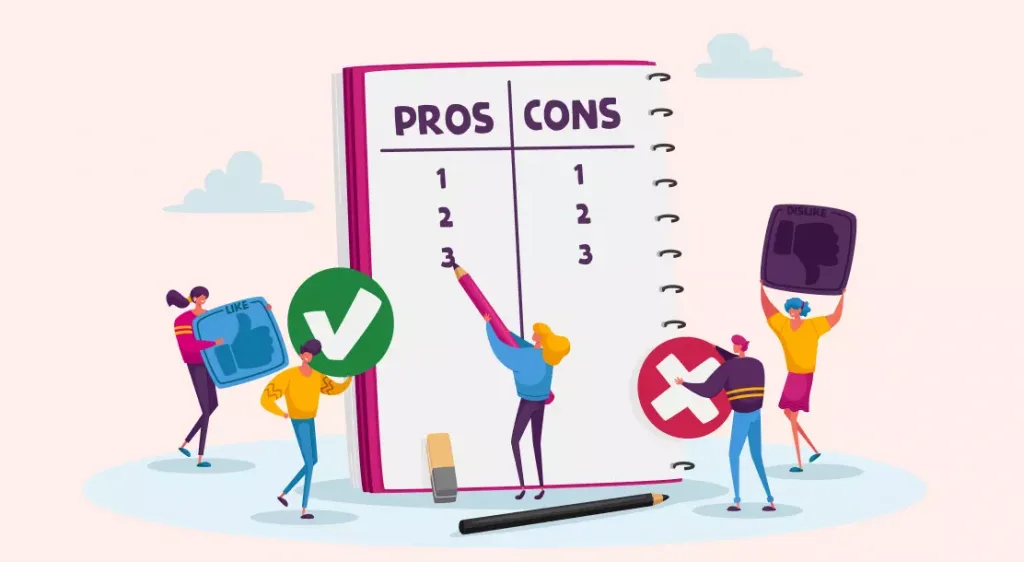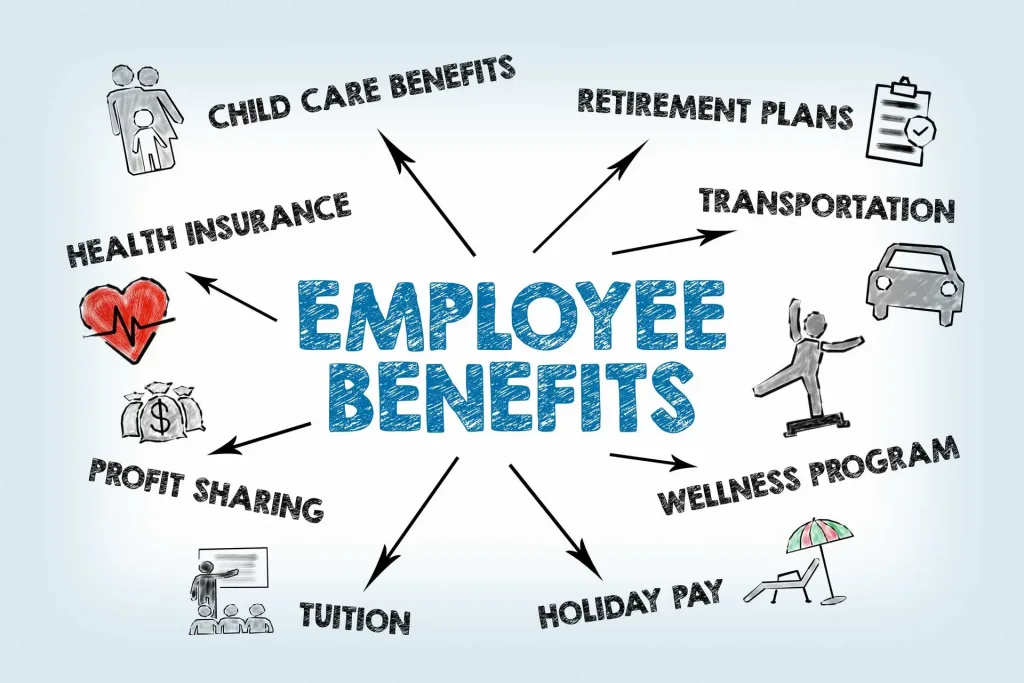Introduction:
Navigating the Path to Professional Freedom In today’s rapidly evolving work landscape, the Freelancing vs Traditional Employment is a question in every workers life to decide from. As the gig economy gains momentum, professionals are increasingly drawn to the allure of freelancing a world of flexible schedules, diverse projects, and the potential for greater control over one’s career. However, this shift prompts a critical question is freelancing a superior alternative to traditional employment, or are there distinct advantages and disadvantages to each path? In this article, we will delve into the realm of freelancing vs traditional employment, exploring their key differences, weighing the pros and cons, and helping you navigate the path that aligns best with your aspirations and professional goals.
Freelancing has become a beacon of professional freedom in an era defined by non-traditional work arrangements. It offers individuals the autonomy to set their own schedules, choose their projects, and work from anywhere in the world. The allure of being your own boss, escaping the confines of a traditional office environment, and having the opportunity to shape your own professional destiny is undoubtedly enticing.
On the other hand, traditional employment provides a sense of stability and security that can be particularly appealing for those who value a consistent paycheck, employer-provided benefits, and a clear career trajectory. While freelancing may seem like the epitome of flexibility, it also comes with its fair share of uncertainties, such as irregular income streams and the responsibility to handle self-employment taxes and benefits. Traditional employment, though it offers stability, can also be accompanied by the constraints of fixed working hours, limited control over projects, and the demands of office politics.

Definition Of Freelancing vs Traditional Employment:
Freelancing, often referred to as independent contracting or self-employment, is a work arrangement where individuals offer their skills, expertise, and services to clients on a project basis. Freelancers operate as their own business entities, taking on assignments from various clients and often working remotely. They have the freedom to choose the projects they want to work on, negotiate their rates, and set their own schedules. Freelancers are responsible for managing their own taxes, marketing their services, and building a client base. This type of work arrangement allows individuals to have greater control over their work-life balance and the potential to explore diverse industries and projects.
In contrast, traditional employment refers to a work arrangement where individuals are employed by a company or organization on a full-time or part-time basis. Traditional employees are hired by employers who provide them with a regular salary or wage, benefits such as healthcare and retirement plans, and often a structured career path within the organization. They work under the supervision and direction of their employer and are subject to company policies, procedures, and a set schedule. Traditional employees typically have more stability and predictability in terms of income and benefits, but they may have less autonomy and flexibility in freelancing vs traditional employment.

Growing Popularity Of Freelancing In The Gig Economy:
The gig economy, characterized by short-term contracts and freelance work, has experienced a significant surge in recent years, leading to the growing popularity of freelancing. This shift can be attributed to several factors that have reshaped the way we work and the expectations we have for our careers. One of the primary drivers of this trend is the advancement of technology and the increasing connectivity of the world. The rise of digital platforms and online marketplaces has made it easier than ever for freelancers to find work opportunities, connect with clients globally, and showcase their skills and portfolios. This accessibility has opened doors for freelancers to tap into a vast pool of projects and clients, transcending geographical boundaries and offering a diverse range of opportunities.
Moreover, the desire for greater autonomy and flexibility in work-life balance has contributed to the growing appeal of freelancing. Many professionals today are seeking alternatives to the traditional 9-to-5 office grind, desiring more control over their schedules and the ability to prioritize their personal lives. Freelancing provides an avenue for individuals to achieve this flexibility, enabling them to choose when and where they work. This freedom is especially attractive to parents, caregivers, and those with other commitments that require a more adaptable work arrangement. Additionally, freelancing allows individuals to pursue their passions and interests, as they can selectively take on projects that align with their skills and areas of expertise, resulting in increased job satisfaction and fulfillment.

Pros And Cons Of Freelancing:
Freelancing offers a range of advantages that have contributed to its growing popularity in the modern work landscape. One of the primary benefits is the flexibility it provides. Freelancers have the freedom to choose their own working hours, allowing them to create a schedule that aligns with their personal preferences and lifestyle. This flexibility enables individuals to strike a balance between work and personal commitments, leading to increased satisfaction and overall well-being. Additionally, freelancers have the autonomy to select the projects they want to work on, allowing them to pursue their passions and specialize in areas that genuinely interest them. This sense of control over one’s work can lead to a higher level of job satisfaction and fulfillment.
Another advantage of freelancing is the potential for higher earning potential. Freelancers have the opportunity to set their own rates and negotiate payment terms with clients. Unlike traditional employment where individuals are limited by a fixed salary, freelancers can determine their worth based on their skills, experience, and the value they bring to clients. Moreover, freelancers have the ability to work on multiple projects simultaneously, which can lead to a diverse portfolio and increased income streams. However, it is important to note that the earning potential in freelancing can vary and is dependent on factors such as industry demand, competition, and the ability to consistently secure projects. Freelancers must also consider factors such as taxes, healthcare, and other expenses that are typically covered by employers in traditional employment settings. It is essential for freelancers to carefully manage their finances and plan for contingencies.

Flexibility And Control Over Work Schedule:
One of the most appealing aspects of freelancing is the unparalleled flexibility and control over one’s work schedule. Unlike traditional employment, freelancers have the autonomy to design their workdays according to their preferences and individual needs. This level of flexibility allows freelancers to strike a balance between their personal and professional lives, accommodating family commitments, personal interests, and other responsibilities. Whether it’s working early in the morning or late at night, freelancers have the freedom to choose the hours that suit their productivity and lifestyle, leading to increased job satisfaction and a better work-life integration.
Moreover, this flexibility extends beyond simply choosing the hours of work. Freelancers also have the ability to determine where they work, whether it’s from the comfort of their own home, a coffee shop, or a co-working space. This eliminates the need for commuting and allows freelancers to create their ideal work environment, fostering a sense of comfort and productivity. Additionally, freelancers can adapt their schedules to accommodate personal appointments, vacations, or other non-work commitments without having to seek permission or adhere to strict company policies. The flexibility in determining both the time and place of work empowers freelancers to optimize their productivity and tailor their work lives to suit their individual preferences and circumstances. However, it’s important for freelancers to strike a balance and maintain a sense of discipline and structure in order to meet client deadlines and effectively manage their projects.

Potential For Higher Earning Potential:
One of the enticing aspects of freelancing is the potential for higher earning potential compared to traditional employment. Freelancers have the opportunity to set their own rates and negotiate payment terms with clients based on their skills, experience, and the value they bring to the table. Unlike a fixed salary in a traditional job, freelancers have the flexibility to charge higher rates as they gain expertise and build a strong portfolio. This means that freelancers can directly reap the benefits of their hard work, talent, and dedication, potentially leading to a higher income compared to being bound by a predetermined salary.
Moreover, freelancers have the advantage of diversifying their income streams by working on multiple projects simultaneously. By taking on various projects and clients, freelancers can expand their portfolio and tap into different industries or niches. This not only enhances their professional growth but also increases their earning potential as they can leverage their expertise across multiple avenues. Freelancers also have the freedom to choose higher-paying projects or clients that align with their skills and interests. As they build a reputation and establish a strong network, they may attract more lucrative opportunities that can significantly impact their earning potential. However, it’s important to note that freelancers must also consider factors such as taxes, healthcare, and other expenses that are typically covered by employers in traditional employment settings. Managing finances, budgeting, and planning for future contingencies are crucial aspects for freelancers to ensure they maximize their earning potential.

Variety Of Projects And Clients:
One of the remarkable advantages of freelancing is the opportunity to work on a diverse range of projects and collaborate with different clients. Freelancers have the freedom to select projects that align with their interests, expertise, and career goals. This variety allows them to continuously expand their skill set, explore new industries, and tackle exciting challenges. Unlike traditional employment where individuals may be confined to a specific role or industry, freelancers can take on projects that span various sectors, providing them with a rich and dynamic professional experience.
Moreover, freelancers have the flexibility to work with a multitude of clients, both locally and globally. This exposure to different clients not only widens their network but also allows them to learn from a variety of perspectives and work cultures. Each client brings unique requirements, objectives, and expectations, providing freelancers with the opportunity to hone their communication and interpersonal skills. Additionally, the ability to work with different clients enables freelancers to diversify their income sources and reduce dependency on a single employer. It also opens doors for building long-term relationships with clients who appreciate their work, potentially leading to repeat projects or referrals, and ultimately enhancing their professional reputation. The range of projects and clients available to freelancers offers an ever-changing landscape that keeps work interesting, stimulating, and full of possibilities.

Lack Of Job Security And Stability:
While freelancing offers a range of advantages, it’s essential to consider the potential drawbacks, including the lack of job security and stability. Unlike traditional employment with a steady paycheck, freelancers face a level of uncertainty as their income is dependent on the projects they secure and the clients they work with. The flow of work can be unpredictable, with periods of high demand and successful projects followed by lulls or gaps between assignments. This inconsistency can create financial instability and require careful financial planning and budgeting to manage variable income streams effectively.
Additionally, freelancers lack the safety net of employee benefits provided by traditional employment. Freelancers are responsible for funding their own healthcare, retirement plans, and other benefits that are typically covered by employers. This additional financial burden and the need to navigate the complexities of self-employment taxes and insurance can add complexity and stress to the freelancing journey. Furthermore, freelancers may not have access to paid time off or sick leave, meaning they need to account for these periods in their income planning and factor in potential loss of earnings during times of personal leave or illness. Overall, the lack of job security and stability is an inherent trade-off in the freelancing world, and it’s crucial for freelancers to proactively manage and mitigate these risks through financial planning, networking, and building a solid client base.

Responsibility For Self-Employment Taxes And Benefits:
One of the key considerations for freelancers is the responsibility for handling self-employment taxes and benefits. Unlike traditional employees who have taxes automatically deducted from their paychecks, freelancers are responsible for calculating, reporting, and paying their own taxes. This includes income taxes, as well as self-employment taxes, which cover Social Security and Medicare contributions. Freelancers must stay organized and keep accurate records of their income and expenses to ensure they meet their tax obligations. They may also need to make quarterly estimated tax payments to the relevant tax authorities.
In addition to taxes, freelancers are responsible for their own benefits. Unlike traditional employment where employers often provide health insurance, retirement plans, and other benefits, freelancers must seek and fund these benefits themselves. This can be a significant financial burden, as individual health insurance plans can be costly, and saving for retirement becomes solely their responsibility. Freelancers need to carefully evaluate their options and consider factors such as cost, coverage, and portability when selecting insurance plans and retirement savings strategies. While this aspect requires extra effort and financial planning, it also offers freelancers the flexibility to customize their benefits package according to their individual needs and preferences.
Managing self-employment taxes and benefits requires a proactive approach from freelancers. They should consult with tax professionals or accountants to ensure they understand the specific tax regulations and obligations in their jurisdiction. It is also essential to explore options for health insurance, retirement plans, and other benefits to ensure they have adequate coverage and financial security. By taking on these responsibilities, freelancers have the potential to gain more control over their financial situation and make decisions that align with their personal goals and circumstances.

Isolation And Lack Of Team Structure:
One of the notable challenges faced by freelancers is the potential for isolation and a lack of team structure. Unlike traditional employment where individuals work within a structured team environment, freelancers often work independently or in small, remote teams. This can result in a sense of isolation and reduced opportunities for collaboration and social interaction. Without regular face-to-face interaction with colleagues, freelancers may miss out on the camaraderie, support, and sense of belonging that comes with being part of a team. This isolation can sometimes lead to feelings of loneliness and impact motivation and overall job satisfaction.
Moreover, the absence of a team structure in freelancing means that freelancers may have to bear the burden of various roles and responsibilities. They not only have to focus on delivering their core services but also take on additional tasks such as client management, marketing, accounting, and project coordination. This can be overwhelming, particularly for freelancers who prefer to focus solely on their area of expertise. The lack of a dedicated team to delegate tasks or provide support can lead to increased stress and the need for strong self-management skills. Freelancers must be adept at multitasking, setting priorities, and establishing efficient workflows to manage their workload effectively.
To counteract the challenges of isolation and lack of team structure, freelancers can take proactive steps to build a support network and foster connections. This can be done through attending industry events, joining professional associations, or participating in online communities for freelancers. Engaging in networking activities and seeking opportunities for collaboration can help alleviate the feelings of isolation and provide a sense of belonging. Additionally, freelancers can consider partnering with other freelancers or forming virtual teams to create a support system and share resources and expertise. Establishing regular check-ins and virtual meetings with clients or collaborators can also foster a sense of teamwork and maintain open lines of communication. By actively addressing the challenges of isolation and team structure, freelancers can enhance their overall work experience and mitigate the potential negative effects.

Pros And Cons Of Traditional Employment:
Traditional employment, characterized by working for a company or organization as an employee, comes with its own set of advantages and disadvantages. One of the significant benefits of traditional employment is the sense of job security and stability it offers. Traditional employees typically have a fixed salary, regular work hours, and the assurance of steady employment as long as they meet performance expectations. This stability provides a level of financial security and peace of mind, especially for individuals who prefer a predictable income and do not want to bear the risks associated with freelancing.
Furthermore, traditional employment often comes with comprehensive benefits packages. Employers commonly provide health insurance, retirement plans, paid time off, and other perks as part of the employment package. These benefits can significantly contribute to an employee’s overall well-being and quality of life. Having access to employer-provided benefits can alleviate the financial burden of healthcare expenses and retirement planning, giving employees a sense of security and providing peace of mind for the future.
On the flip side, traditional employment may also have some drawbacks. One of the limitations is the lack of flexibility in work schedules. Traditional employees often have fixed hours and may be required to work a standard 9-to-5 schedule. This rigidity can make it challenging to balance personal and professional commitments, and it may limit the ability to pursue other interests or take on alternative work arrangements. Additionally, traditional employees typically have less control over the projects they work on and the direction of their careers. They are bound by company policies, hierarchies, and the decision-making of their superiors, which can limit their autonomy and opportunities for growth and self-expression.

Stable Income And Benefits:
One of the significant advantages of traditional employment is the assurance of a stable income. Traditional employees typically receive a fixed salary or hourly wage, providing them with a predictable and regular source of income. This stability allows employees to plan their finances, meet their financial obligations, and have a sense of financial security. Unlike freelancers who may experience fluctuations in their income, traditional employees can rely on a consistent paycheck, which can alleviate financial stress and provide a greater sense of stability.
In addition to a stable income, traditional employment often comes with a range of benefits provided by the employer. These benefits can include health insurance, retirement plans, paid time off, and other perks such as bonuses or employee discounts. Employer-provided benefits contribute to the overall well-being of employees by ensuring access to necessary healthcare services, facilitating long-term financial planning, and offering opportunities for relaxation and leisure. The availability of such benefits can also reduce the financial burden on employees, as they do not have to bear the full cost of these services on their own.
However, it’s important to note that the availability and extent of benefits can vary depending on the employer and the employment agreement. Not all traditional jobs offer comprehensive benefits packages, and the level of coverage may differ from one company to another. Additionally, employees may have to meet certain eligibility criteria or wait for a probationary period before gaining access to these benefits. It’s crucial for individuals considering traditional employment to carefully review and understand the benefits package offered by prospective employers to make informed decisions regarding their financial well-being.

Clear Career Progression And Professional Development:
Traditional employment often provides a clear career progression path and opportunities for professional development. Employees can benefit from a structured hierarchy within the organization, with defined roles and levels of responsibility. This clarity allows employees to understand the steps they need to take to advance their careers within the company. They can set goals, work towards promotions, and have a clear sense of the skills and experience required to reach the next level. This well-defined career progression can be motivating and provide a sense of direction and purpose for employees.
Furthermore, traditional employment typically offers various avenues for professional development. Companies often provide training programs, workshops, and resources to help employees enhance their skills and knowledge. These opportunities for growth and learning can contribute to the development of a well-rounded skill set and increase job satisfaction. Traditional employees may also have access to mentorship programs or senior colleagues who can guide and support their career development. This investment in professional growth not only benefits employees personally but also adds value to the organization by cultivating a skilled and capable workforce.
However, it’s important to note that the extent of career progression and professional development opportunities can vary across organizations. Some companies may prioritize employee development and provide ample resources, while others may have limited opportunities or require employees to take initiative in seeking out growth opportunities. Employees should actively engage in discussions with their managers, express their career aspirations, and explore available avenues for development to maximize their professional growth within traditional employment.

Limited Flexibility And Control Over Work Schedule:
One of the drawbacks of traditional employment is the limited flexibility and control over work schedules. Most traditional jobs adhere to a fixed schedule, often a standard 9-to-5 arrangement, which may not align with everyone’s preferred working style or personal commitments. Employees may have little flexibility to adjust their work hours to accommodate personal obligations or to pursue other interests outside of work. This lack of control over one’s schedule can be restrictive and may lead to difficulties in achieving work-life balance.
Additionally, traditional employment often requires employees to commute to a physical workplace. This daily commute can be time-consuming and may add stress to an individual’s daily routine. It also limits the geographical flexibility, as employees are typically required to be present in the office or specific location during designated working hours. This lack of flexibility in terms of location and schedule can impede individuals from pursuing alternative work arrangements, such as remote work or flexible hours, which can better suit their lifestyle or preferences.
It’s important to note that the level of flexibility and control over work schedules can vary among different companies and industries. Some organizations may offer flexible work arrangements or remote work options, allowing employees to have more control over when and where they work. However, these arrangements may not be universally available and are often subject to company policies and the nature of the job itself. Employees seeking greater flexibility may need to carefully assess their options and consider alternative career paths or explore opportunities in industries that are known for offering more flexible work arrangements.

Office Politics And Limited Autonomy:
One aspect of traditional employment that can be challenging is navigating office politics and dealing with a hierarchical structure. In many traditional work environments, there can be a complex web of relationships and power dynamics that influence decision-making and career advancement. Employees may need to be mindful of office politics, build alliances, and navigate interpersonal dynamics to secure promotions or gain recognition. Negotiating these dynamics can be time-consuming and mentally draining, detracting from the focus on job responsibilities and personal growth.
Furthermore, traditional employment often involves working within a hierarchical structure where decision-making authority lies with superiors or higher-level managers. This limited autonomy can sometimes hinder creativity and innovation, as employees may feel constrained by rigid protocols and processes. Ideas or suggestions may need to go through multiple layers of approval, resulting in delays or dilution of the original concept. This lack of autonomy can impact job satisfaction and limit opportunities for employees to fully utilize their skills and contribute to the organization in a meaningful way.
However, it’s worth noting that not all traditional work environments are riddled with office politics or characterized by limited autonomy. The extent of these challenges can vary among organizations and teams. Some companies prioritize open communication, collaborative decision-making, and empowering their employees to take ownership of their work. By carefully researching potential employers and assessing company culture, individuals can seek out organizations that foster a positive work environment with minimized office politics and increased autonomy. Additionally, developing strong interpersonal skills, building positive relationships, and actively seeking opportunities to contribute and make an impact can help individuals navigate office politics and carve out a fulfilling career within traditional employment.

Retirement And Health Benefits Provided By The Employer:
One of the significant advantages of traditional employment is the retirement and health benefits provided by the employer. Many companies offer retirement plans such as 401(k) or pension schemes, which allow employees to save for their future. These plans often come with employer contributions, helping to boost the employee’s retirement savings. By participating in these plans, employees have the opportunity to build a nest egg for their retirement years, ensuring financial security and peace of mind in the long run. The employer’s contribution is an additional benefit that can accelerate the growth of retirement savings and provide an added incentive for employees to stay with the company.
In addition to retirement benefits, traditional employment often includes health insurance coverage as part of the employment package. Employers typically offer group health insurance plans that provide coverage for medical expenses, including doctor visits, hospital stays, and prescription medications. This coverage can significantly reduce the financial burden of healthcare expenses for employees and their families. By having access to employer-provided health insurance, employees can enjoy the peace of mind of knowing that their medical needs are covered, which can lead to better overall well-being. Moreover, group insurance plans may offer more comprehensive coverage at lower costs compared to individual health insurance plans, providing employees with a valuable benefit.
It’s important to note that the level of retirement and health benefits can vary among employers. The specific details of these benefits, including eligibility requirements and coverage levels, should be carefully reviewed and considered when evaluating traditional employment opportunities. Employees should assess the retirement plans on offer, understand the vesting period, and consider the employer’s contribution match to maximize their retirement savings. Similarly, reviewing the health insurance options, including coverage limits, deductibles, and co-pays, can help employees make informed decisions regarding their healthcare needs. Overall, the retirement and health benefits provided by the employer can be valuable components of traditional employment, contributing to financial security and peace of mind.

Commuting And Time Spent In The Office:
One aspect of traditional employment that can impact work-life balance is the time spent commuting to and from the office. Many traditional jobs require employees to travel to a physical workplace, which can result in significant commute times depending on the location and traffic conditions. Commuting can be both physically and mentally exhausting, eating into valuable personal time and adding stress to an individual’s daily routine. Long commutes can lead to feelings of frustration, reduced productivity, and a diminished sense of work-life balance.
Moreover, the time spent in the office itself can also be a factor to consider. Traditional employment often follows a standard 9-to-5 schedule, with employees expected to be physically present for a fixed number of hours. This fixed schedule may not align with everyone’s natural productivity rhythms or personal commitments. It can limit flexibility in managing personal tasks or pursuing other interests outside of work. The rigid structure of office hours may not allow individuals to optimize their work hours based on their individual needs and preferences.
However, advancements in technology and changing work practices have brought about alternative solutions to mitigate the challenges of commuting and time spent in the office. Remote work and flexible work arrangements have become more prevalent, allowing employees to work from home or choose flexible hours that suit their lifestyle. These options can eliminate or reduce the need for daily commuting and provide greater control over how time is allocated throughout the day. Remote work also offers the potential for increased productivity and work-life integration, as employees have the freedom to create their optimal work environment and manage their time more efficiently.

Key Factors To Consider:
When weighing the pros and cons of freelancing versus traditional employment, there are several key factors to consider that can help individuals make an informed decision. One essential factor is personal preference and work style. Freelancing may be a better fit for individuals who value autonomy, flexibility, and the ability to choose their projects and clients. On the other hand, traditional employment may appeal to those who seek stability, structured career progression, and the benefits and perks that come with working for a company. Understanding one’s own work preferences and priorities can guide the decision-making process and ensure alignment with long-term career goals.
Another crucial factor to consider is financial stability and risk tolerance. Freelancing offers the potential for higher earning potential, but it also comes with financial uncertainty, as income may fluctuate depending on the availability of projects and clients. Traditional employment, on the other hand, provides a stable income and benefits package, offering greater financial security. Individuals should assess their risk tolerance, financial goals, and responsibilities to determine which option aligns better with their financial needs and aspirations. Freelancers should also consider the need to handle self-employment taxes and set aside funds for retirement and healthcare, while employees can benefit from employer-provided retirement plans and health benefits.
Other factors to consider include the desired level of work-life balance, the availability of growth and learning opportunities, the need for a team structure or individual autonomy, and the compatibility of the chosen path with personal and family commitments. It’s important to thoroughly evaluate these factors and consider their long-term implications before making a decision. Additionally, individuals should keep in mind that the decision between freelancing vs traditional employment is not necessarily permanent and can be revisited as circumstances change and career goals evolve.

Personal Preferences And Work Style:
When weighing the pros and cons of freelancing versus traditional employment, there are several key factors to consider that can help individuals make an informed decision. One essential factor is personal preference and work style. Freelancing may be a better fit for individuals who value autonomy, flexibility, and the ability to choose their projects and clients. On the other hand, traditional employment may appeal to those who seek stability, structured career progression, and the benefits and perks that come with working for a company. Understanding one’s own work preferences and priorities can guide the decision-making process and ensure alignment with long-term career goals.
Another crucial factor to consider is financial stability and risk tolerance. Freelancing offers the potential for higher earning potential, but it also comes with financial uncertainty, as income may fluctuate depending on the availability of projects and clients. Traditional employment, on the other hand, provides a stable income and benefits package, offering greater financial security. Individuals should assess their risk tolerance, financial goals, and responsibilities to determine which option aligns better with their financial needs and aspirations. Freelancers should also consider the need to handle self-employment taxes and set aside funds for retirement and healthcare, while employees can benefit from employer-provided retirement plans and health benefits.
Other factors to consider include the desired level of work-life balance, the availability of growth and learning opportunities, the need for a team structure or individual autonomy, and the compatibility of the chosen path with personal and family commitments. It’s important to thoroughly evaluate these factors and consider their long-term implications before making a decision. Additionally, individuals should keep in mind that the decision between freelancing vs traditional employment is not necessarily permanent and can be revisited as circumstances change and career goals evolve.

Financial Goals And Risk Tolerance:
When deciding between freelancing vs traditional employment, considering financial goals and risk tolerance is crucial. Freelancing offers the potential for higher earning potential as freelancers have the ability to set their own rates and take on multiple projects simultaneously. They have the opportunity to directly reap the benefits of their hard work and expertise. However, freelancing also comes with financial uncertainty as income can fluctuate depending on the availability of projects and clients. Freelancers must be prepared for periods of inconsistent cash flow and be proactive in managing their finances.
On the other hand, traditional employment provides a more stable income stream with a consistent paycheck. Employees can rely on regular salary payments, benefits, and other perks offered by the employer. This stability can provide a sense of financial security, making it easier to plan for the future and achieve long-term financial goals. Employees can take advantage of employer-sponsored retirement plans, health insurance coverage, and other benefits that contribute to their financial well-being.
Individuals should assess their financial goals, short-term and long-term, and evaluate their risk tolerance. Freelancing may be suitable for those with a higher risk tolerance who are comfortable with the potential income variability and are motivated by the prospect of higher earnings. On the other hand, individuals with a lower risk tolerance and a focus on stability and financial security may find traditional employment more appealing. Considering personal financial goals and risk tolerance can help individuals make a decision that aligns with their financial aspirations and ensures a comfortable financial future.

Skillset And Industry Demand:
Considering one’s skillset and industry demand is essential when contemplating the choice between freelancing vs traditional employment. Freelancing allows individuals to leverage their specific skills and expertise in a flexible manner. They have the freedom to choose projects that align with their strengths and interests, enabling them to showcase their specialized knowledge and stand out in their respective fields. Freelancers can continuously refine and expand their skillset based on market demand and emerging industry trends. By staying attuned to industry needs and honing their skills accordingly, freelancers can position themselves as sought-after professionals in their niche.
On the other hand, traditional employment often requires a broader skillset that may encompass various aspects of a specific role or job function. Employees in traditional roles are expected to have a range of skills relevant to their position, contributing to the overall operations and goals of the organization. While they may not have the same level of specialization as freelancers, employees benefit from the opportunity to develop a well-rounded skillset and gain experience in different areas. Traditional employment can provide avenues for professional growth and learning, allowing individuals to acquire new skills and adapt to changing industry demands over time.
Assessing one’s skillset and evaluating industry demand can help individuals determine which path aligns better with their career goals. Freelancers should consider their unique expertise and whether there is a sufficient market demand for their services. Researching the demand for specific skills and evaluating the competitiveness of the freelance market can guide freelancers in making informed decisions. Similarly, employees should assess their current skillset and industry trends to ensure their skills remain relevant and sought after in the job market. Regularly updating skills, attending professional development programs, and staying abreast of industry changes can help employees thrive within traditional employment settings.

Importance Of Work-Life Balance:
Maintaining a healthy work-life balance is crucial for overall well-being and personal satisfaction, regardless of whether one chooses freelancing or traditional employment. Work-life balance refers to the equilibrium between work-related commitments and personal life, allowing individuals to effectively manage their time and energy in pursuit of both professional and personal goals. Achieving work-life balance is vital as it promotes mental and physical health, reduces stress, enhances productivity, and improves overall quality of life.
For freelancers, work-life balance can be a double-edged sword. While freelancing offers flexibility and the potential to create a personalized schedule, it can also blur the boundaries between work and personal life. Without clear boundaries, freelancers may find themselves working long hours or constantly thinking about work, impacting their ability to unwind and enjoy personal time. Establishing a routine, setting boundaries, and prioritizing self-care are essential for freelancers to maintain a healthy work-life balance. Creating dedicated time for leisure activities, family, and self-care not only enhances personal well-being but also contributes to increased productivity and job satisfaction.
Similarly, traditional employment can present challenges to achieving work-life balance, especially if the organization has a culture of long working hours or lacks flexibility in scheduling. However, traditional employment often offers the advantage of a structured work environment, defined work hours, and established policies that promote work-life balance. Employees can benefit from having clearly defined boundaries between work and personal life, enabling them to disconnect from work-related stressors and engage in activities that foster personal growth and well-being. Prioritizing time for family, hobbies, and self-care, along with effectively managing workload and setting realistic expectations, can help employees maintain a healthy work-life balance.
Ultimately, work-life balance is a personal endeavor that requires conscious effort and self-awareness. Regardless of the chosen work path, individuals must prioritize their well-being and strive for a balance that allows them to thrive both professionally and personally.

Transitioning Between freelancing vs traditional employment:
Transitioning between freelancing vs traditional employment can be a significant career move that requires careful consideration and planning. Many individuals may find themselves contemplating a transition due to changing personal circumstances, evolving career goals, or the desire for a different work environment. Understanding the process and challenges involved can help make the transition smoother and more successful.
One key aspect to consider when transitioning from freelancing to traditional employment is adjusting to a structured work environment. Freelancers are accustomed to the flexibility and independence of managing their own schedules and working on diverse projects. Moving into a traditional employment setting may require adapting to a fixed schedule, reporting to a supervisor, and conforming to company policies and procedures. It’s important to assess one’s comfort level with these changes and prepare for the shift in work dynamics. Developing strong organizational and communication skills, along with a willingness to collaborate with colleagues, can help facilitate a smooth transition.
Conversely, transitioning from traditional employment to freelancing requires individuals to establish their own business, build a client base, and manage various aspects of self-employment. Freelancers need to be self-motivated, disciplined, and proactive in seeking new projects and clients. They must also be prepared for the financial aspects of freelancing, such as invoicing, managing taxes, and ensuring a steady income stream. Building a strong professional network, marketing one’s skills effectively, and continuously upgrading one’s expertise are essential for success as a freelancer. Regardless of the direction of the transition, individuals should thoroughly research and evaluate the implications of the change. Networking with professionals who have experience in the desired field, seeking mentorship, and gradually transitioning by taking on part-time freelance work or exploring flexible employment options can help individuals navigate the transition more effectively. Additionally, maintaining a growth mindset, being open to learning new skills, and embracing new opportunities are key to successfully transitioning between freelancing vs traditional employment.

Factors To Consider When Transitioning To Freelancing:
Transitioning from traditional employment to freelancing is an exciting step that offers increased autonomy and flexibility in one’s career. However, it requires careful consideration of several factors to ensure a successful transition. Here are some key factors to consider when making the shift to freelancing.
Firstly, it is essential to evaluate one’s financial readiness. Freelancing often comes with income variability, especially in the initial stages. Before making the transition, individuals should assess their financial situation and determine if they have sufficient savings to sustain themselves during periods of lower income. Additionally, it is crucial to research and understand the market rates and demand for the services one intends to offer as a freelancer. This will help in setting realistic pricing and ensuring a steady stream of clients. Creating a detailed budget, accounting for business expenses, and having a contingency plan in place are essential for financial stability when transitioning to freelancing.
Another factor to consider is building a strong professional network and establishing a client base. As a freelancer, one is responsible for finding and securing clients independently. It is important to leverage existing professional connections and actively network within the industry to expand the client base. Developing a strong online presence through a professional website, portfolio, and social media can also help attract potential clients. Building a reputation for delivering high-quality work and maintaining positive client relationships is crucial for long-term success in freelancing. Taking the time to strategize and create a marketing plan, as well as honing networking and communication skills, will greatly aid in the transition to freelancing.
Transitioning to freelancing requires careful planning, financial preparedness, and a proactive approach to acquiring clients. By considering these factors and putting in the necessary groundwork, individuals can make a successful transition to the freelance world and enjoy the benefits of working on their own terms.

Transitioning From Freelancing To Traditional Employment:
Transitioning from traditional employment to freelancing is an exciting step that offers increased autonomy and flexibility in one’s career. However, it requires careful consideration of several factors to ensure a successful transition. Here are some key factors to consider when making the shift to freelancing.
Firstly, it is essential to evaluate one’s financial readiness. Freelancing often comes with income variability, especially in the initial stages. Before making the transition, individuals should assess their financial situation and determine if they have sufficient savings to sustain themselves during periods of lower income. Additionally, it is crucial to research and understand the market rates and demand for the services one intends to offer as a freelancer. This will help in setting realistic pricing and ensuring a steady stream of clients. Creating a detailed budget, accounting for business expenses, and having a contingency plan in place are essential for financial stability when transitioning to freelancing.
Another factor to consider is building a strong professional network and establishing a client base. As a freelancer, one is responsible for finding and securing clients independently. It is important to leverage existing professional connections and actively network within the industry to expand the client base. Developing a strong online presence through a professional website, portfolio, and social media can also help attract potential clients. Building a reputation for delivering high-quality work and maintaining positive client relationships is crucial for long-term success in freelancing. Taking the time to strategize and create a marketing plan, as well as honing networking and communication skills, will greatly aid in the transition to freelancing.
Transitioning to freelancing requires careful planning, financial preparedness, and a proactive approach to acquiring clients. By considering these factors and putting in the necessary groundwork, individuals can make a successful transition to the freelance world and enjoy the benefits of working on their own terms.

Finding The Right Balance:
Achieving a balance between freelancing vs traditional employment is a common challenge for individuals who engage in both or are contemplating a transition. It is crucial to find the right balance that allows for personal satisfaction, professional growth, and overall well-being. Here are some strategies to help find the right balance between freelancing vs traditional employment.
Firstly, time management is key. Effectively managing time and prioritizing tasks is essential to avoid becoming overwhelmed or burnt out. Setting clear boundaries and allocating specific time blocks for each aspect of work can help maintain a structured routine. Whether it’s dedicating certain days or hours to freelancing or designating specific days for traditional employment, having a schedule that allows for focused attention on each area can help strike a balance. Additionally, using productivity tools, such as task management apps or time-tracking software, can aid in organizing and optimizing work hours.
Secondly, self-care should not be overlooked. Balancing multiple work commitments can be demanding, and neglecting self-care can lead to physical and mental exhaustion. Incorporating regular breaks, exercise, and leisure activities into the daily routine is crucial for recharging and maintaining overall well-being. Additionally, setting aside time for personal relationships, hobbies, and relaxation is essential to avoid work dominating every aspect of life. Taking care of oneself is not only important for individual health and happiness but also enhances productivity and creativity in both freelancing vs traditional employment.
Lastly, continuous evaluation and adjustment are necessary. Finding the right balance is an ongoing process that may require periodic reassessment. As circumstances, priorities, and workloads change, it is important to reevaluate the distribution of time and energy between freelancing vs traditional employment. Being open to making adjustments and adapting strategies based on personal and professional needs is essential for long-term success and fulfillment.
In conclusion, finding the right balance between freelancing vs traditional employment is a dynamic process that requires effective time management, self-care, and regular evaluation. By prioritizing tasks, incorporating self-care practices, and staying flexible, individuals can strike a balance that allows for personal and professional growth while maintaining overall well-being. Finding the right balance is not a one-size-fits-all solution but an individualized journey that evolves with changing circumstances and personal aspirations.

Combining Elements Of Freelancing vs Traditional Employment:
In today’s evolving work landscape, many individuals are exploring the possibility of combining elements of freelancing vs traditional employment to create a unique work arrangement that suits their needs. This hybrid approach offers the benefits of both worlds, providing flexibility, stability, and personal satisfaction. Here are some strategies to successfully combine elements of freelancing vs traditional employment.
One approach is to pursue freelance projects or side gigs while maintaining a part-time or full-time traditional job. This allows individuals to leverage their skills, expand their professional network, and generate additional income outside of their regular employment. Freelancing on the side can offer opportunities for creative expression, professional growth, and building a personal brand. It’s important to manage time effectively, ensuring that freelance work doesn’t interfere with regular job responsibilities. Open communication with employers about freelancing activities can help establish boundaries and maintain a transparent relationship.
Another approach is to negotiate a flexible work arrangement with a traditional employer that allows for remote work, flexible hours, or project-based assignments. This enables individuals to enjoy the stability and benefits of traditional employment while still having some control over their work schedule and projects. By demonstrating the value of flexibility and presenting a well-thought-out plan, individuals can make a compelling case to their employer for a hybrid work arrangement. It is crucial to establish clear expectations and deliver on agreed-upon commitments to maintain trust and ensure a successful blend of freelancing vs traditional employment.
Combining elements of freelancing vs traditional employment requires effective time management, strong communication skills, and a proactive approach to seeking opportunities. It provides the advantage of diversifying income sources, exploring different work environments, and cultivating a versatile skillset. However, it’s important to strike a balance and avoid overextending oneself. Regularly assessing workloads, evaluating the feasibility of commitments, and maintaining open communication with employers and clients are key to successfully navigating this hybrid work arrangement.
In conclusion, combining elements of freelancing vs traditional employment offers individuals the opportunity to create a unique work arrangement that aligns with their goals and aspirations. By strategically incorporating freelancing into a traditional job or negotiating flexible work arrangements, individuals can enjoy the benefits of both worlds and find a fulfilling balance between stability and flexibility. The key lies in effective time management, clear communication, and continuously evaluating and adjusting the arrangement to ensure long-term success and satisfaction.

Freelancing As A Side Hustle Along Side Traditional Employment:
In today’s gig economy, many individuals are exploring the option of freelancing as a side hustle while maintaining their traditional employment. This approach offers a range of benefits, including additional income, professional growth, and the opportunity to pursue passion projects. However, successfully balancing freelancing and a traditional job requires careful planning and effective time management.
One advantage of freelancing as a side hustle is the opportunity to diversify income streams. By taking on freelance projects outside of regular working hours, individuals can boost their earnings and achieve greater financial stability. Additionally, freelancing allows individuals to explore different industries, work on exciting projects, and expand their professional network. This can lead to valuable connections and future opportunities for career advancement.
To manage freelancing vs traditional employment, effective time management is essential. It’s important to create a schedule that allows for dedicated time to focus on freelance work while also meeting the commitments of the traditional job. Prioritizing tasks, setting realistic deadlines, and establishing clear boundaries can help maintain a healthy work-life balance. Effective communication with both clients and employers is also crucial to ensure transparency and manage expectations. By striking a balance between freelancing vs traditional employment, individuals can enjoy the benefits of both worlds while pursuing their professional aspirations.

Conclusion:
In conclusion, freelancing vs traditional employment reveals a myriad of factors to consider when making career choices. Both options come with their own set of advantages and disadvantages, and what works best for one individual may not necessarily be the right fit for another. The gig economy has provided freelancers with unprecedented opportunities for autonomy, flexibility, and the potential for higher earnings. On the other hand, traditional employment offers stability, benefits, and a clear career progression.
When deciding between freelancing and traditional employment, it is crucial to assess personal preferences, financial goals, work-life balance, and the demand for specific skills in the industry. Each option has its own set of trade-offs, and individuals need to prioritize what matters most to them. Furthermore, it is important to recognize that the decision is not set in stone. Many individuals may find themselves transitioning between freelancing and traditional employment throughout their careers, leveraging the advantages of both to create a customized work arrangement.
Ultimately, there is no one-size-fits-all answer when it comes to choosing between freelancing and traditional employment. It is a personal decision that requires careful consideration of individual circumstances, goals, and values. By understanding the pros and cons of each option and considering the factors that are most important to you, you can make an informed choice that aligns with your professional aspirations and overall well-being.





One Response
This stage is phenomenal. The brilliant substance exhibits the manager’s dedication. I’m overpowered and envision more such unfathomable entries.